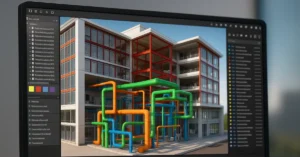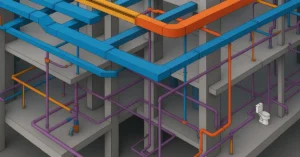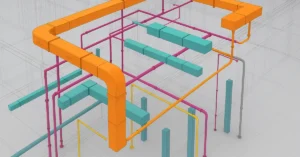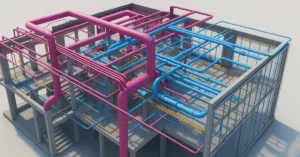Discover the striking brutalist buildings in Chandigarh
Among the few cities in the world that can claim architectural consistency as a defining identity, Chandigarh stands apart. The capital of both Punjab and Haryana, Chandigarh is a city envisioned with a modernist utopia in mind. Spearheaded by the renowned Swiss-French architect Le Corbusier in the 1950s, the city is a testament to the fusion of urban planning, brutalist aesthetics, and Indian democratic aspirations. While Brutalism as a style is known for its raw materiality, functionalism, and monumental scale, in Chandigarh it also came to represent national progress and cultural renaissance.
In this blog, we delve deep into the brutalist buildings in Chandigarh, highlighting their historical context, design philosophy, and the impact they continue to have on urban architectural discourse.
The Rise of Brutalism in Chandigarh
After India gained independence in 1947, there was a push to create new symbols for a modern, sovereign nation. The city of Chandigarh was one such symbol. Prime Minister Jawaharlal Nehru wanted it to reflect “the nation’s faith in the future.” Entrusted to Le Corbusier and his team, the plan embraced Modernism and Brutalism as its stylistic and functional pillars.
Le Corbusier, along with Indian architects like B.V. Doshi and Pierre Jeanneret, introduced a radical city plan organized by sectors, with monumental buildings made from raw concrete. Their goal was to express efficiency, permanence, and a break from colonial architectural traditions.
Top Brutalist Buildings in Chandigarh
1. Secretariat Building
Location: Capitol Complex, Sector 1
Architect: Le Corbusier
Year: Completed in the 1950s
The Secretariat Building is one of the most prominent brutalist structures in Chandigarh. This 8-story concrete behemoth is where much of the administrative work for Punjab and Haryana takes place. Its exposed concrete form, sun breakers (brise-soleil), and horizontal layout are signature elements of Brutalism. The rhythmic window pattern and massive proportions reflect both utilitarian needs and visual drama.
2. Punjab and Haryana High Court (Palace of Justice)
Location: Capitol Complex, Sector 1
Architect: Le Corbusier
Year: Completed in 1955
The High Court building is perhaps the most visually dramatic structure in the complex. Its massive curved roof, imposing entrance, and colored porticos display Brutalism’s raw power. Yet, it also integrates symbolisms, such as the use of primary colors and sculptural elements that represent balance and justice. This building emphasizes scale and authority, crucial for its judicial role.
3. Legislative Assembly (Palace of Assembly)
Location: Capitol Complex, Sector 1
Architect: Le Corbusier
Year: Completed in 1961
An architectural marvel, the Assembly Building combines Brutalism’s boldness with sculptural finesse. The hyperbolic paraboloid roof, concrete piers, and cylindrical towers define its silhouette. This building was designed to reflect democratic openness, with interiors that boast stunning murals and indirect natural lighting. It represents Brutalism not just as a style, but as an ideological expression.
4. Open Hand Monument
Location: Capitol Complex
Architect: Le Corbusier
Year: Conceptualized in the 1950s, constructed later
While technically a sculpture, the Open Hand Monument is crucial to understanding Brutalist philosophy. Made of metal but rooted in the same ethos of mass and message, it stands 85 feet high and symbolizes peace and reconciliation. Its form—a rotating open palm—embodies Le Corbusier’s vision of Chandigarh as a city “open to give and receive.”
5. Chandigarh College of Architecture (CCA)
Location: Sector 12
Architects: Jeet Malhotra, under the influence of Le Corbusier
Year: Established in 1961
Built in Brutalist style, the CCA itself is a nod to the very architectural values it imparts. The building uses exposed concrete, geometric massing, and functional design elements like courtyards and open corridors. It serves as both an academic institution and an architectural landmark.
6. Government Museum and Art Gallery
Location: Sector 10
Architect: Le Corbusier and Pierre Jeanneret
Year: Opened in 1968
This museum is a fine example of how Brutalism can intersect with culture. Designed with clean lines, raw materials, and pragmatic layouts, the museum houses ancient artifacts, miniature paintings, and modern art. Its minimalist brutalist form gives the artwork inside a striking contrast.
7. Punjab University Campus Buildings
Location: Sector 14
Architects: Pierre Jeanneret and team
Years: 1950s–1970s
The campus of Punjab University is a treasure trove of Brutalist structures. From the Gandhi Bhawan to various faculty buildings, the campus showcases linear forms, exposed concrete, and carefully designed sunshades. Each building is tailored to its function while staying within the larger vision of modernist urban planning.
Le Corbusier’s Philosophy and Chandigarh
Le Corbusier saw Chandigarh as a “living machine” where the city was divided into functional sectors, each with its own green space, amenities, and circulation plan. Brutalism, with its focus on functionality and minimal ornamentation, was the ideal choice to realize this vision.
His Five Points of Architecture (pilotis, flat roof terrace, open floor plan, horizontal windows, free facade) were evident in many buildings. However, in Chandigarh, these principles were adapted for local climate conditions, leading to deep verandahs, brise-soleils, and water features.
Cultural and Political Symbolism
Each building in Chandigarh’s Capitol Complex wasn’t just a government office or an academic institution—it was a statement. The monumental scale of Brutalist buildings reflected the ambition of a young nation ready to forge its path.
The use of concrete symbolized strength and permanence. Moreover, the city’s master plan, with its orderly grid and functional zoning, reflected democratic ideals and a departure from colonial-era chaos.
Public Perception and Criticism
While architects and historians celebrate Chandigarh as a masterpiece of Brutalist and Modernist design, public opinion is mixed. For some, these buildings appear cold, impersonal, and massive. Others see them as works of genius that blend art, politics, and urban planning.
With increasing urbanization and real estate pressures, preserving these buildings has become a significant challenge. Some have undergone renovations that compromise the original aesthetic. There is an urgent need for conservation efforts that respect the integrity of Le Corbusier’s vision.
UNESCO World Heritage Status
In 2016, the Capitol Complex in Chandigarh was inscribed as a UNESCO World Heritage Site. This recognition brought global attention to the city’s architectural significance. It also added momentum to conservation efforts and architectural tourism in the region.
The UNESCO status ensures legal protections and places Chandigarh among the world’s most important sites of 20th-century architecture.
Brutalism’s Legacy in Indian Architecture
Chandigarh’s success inspired other Indian architects and cities. The Brutalist idiom found its way into many government buildings, academic institutions, and housing projects across India. Architects like B.V. Doshi continued Le Corbusier’s legacy in his own way, blending modernism with local traditions.
The city proved that Indian architecture could be bold, experimental, and globally relevant without losing its regional identity.
Conclusion
The brutalist buildings in Chandigarh are more than just structures; they are part of a living ideology. Each concrete column, shadowed corridor, and geometric facade tells a story of vision, revolution, and resilience. They reflect a time when architecture was not just about aesthetics, but about building a national identity.
As the world reconsiders Brutalism in a new light—appreciating its honesty, function, and daring scale—Chandigarh stands as one of its finest examples. Whether you’re an architect, historian, or traveler, exploring Chandigarh’s brutalist legacy is a journey through one of the boldest experiments in modern urban planning.
If you’re interested in learning more about architecture firms in Europe, check out this comprehensive list of the top 50 firms compiled by Archgyan. From innovative startups to long-established industry leaders, this list has it all. Take a look and discover some of the most inspiring and influential architecture firms in Europe today.
If you’re interested in architecture and want to learn more about this amazing field, subscribe to our podcast on youtube
For more SketchUp tutorials, head to https://www.sketchupguru.com










